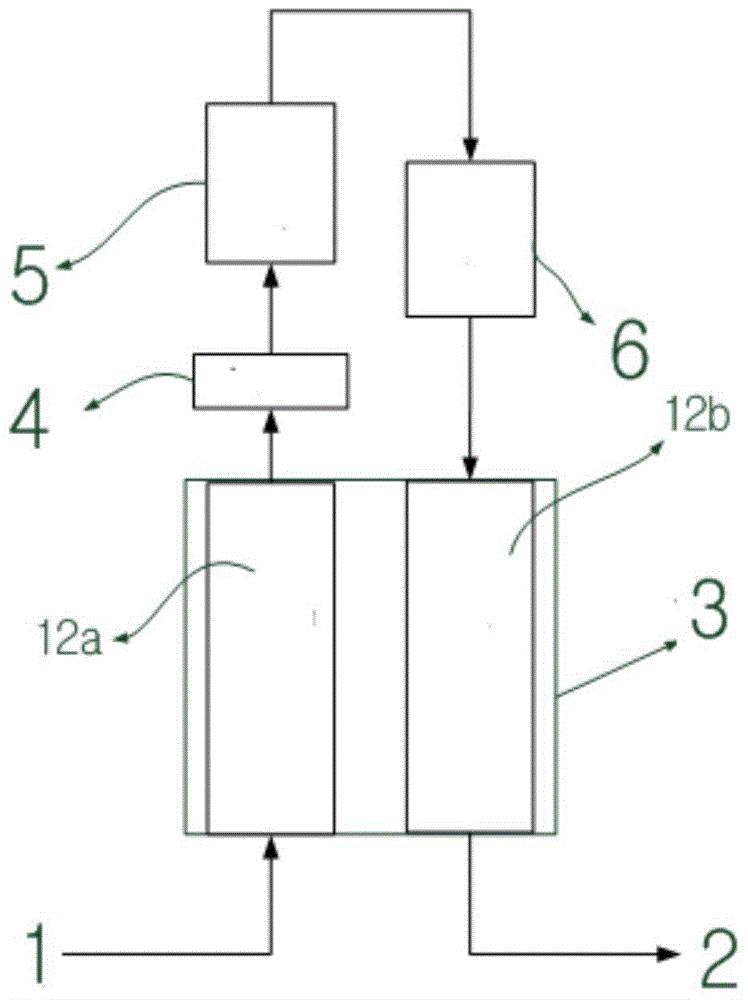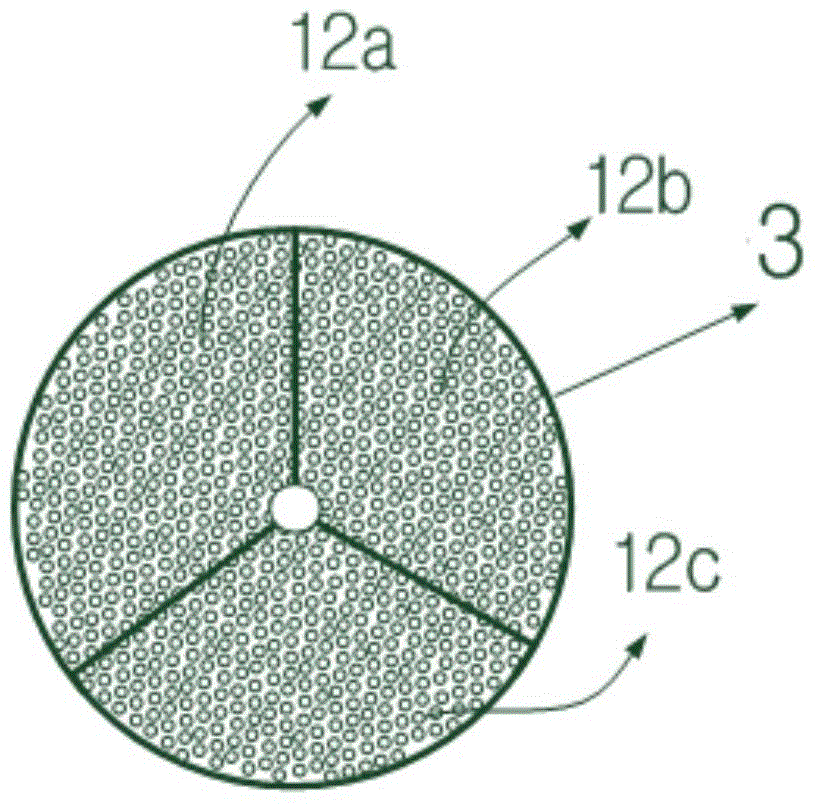Heat exchange method for low-temperature heat accumulating type catalytic oxidation treatment device
A technology for catalytic oxidation and treatment devices, which is applied in combustion methods, incinerators, lighting and heating equipment, etc., can solve the problems of high ignition temperature, large safety hazards, and large energy consumption, and achieve high device efficiency and safety. , the effect of dealing with high indicators
- Summary
- Abstract
- Description
- Claims
- Application Information
AI Technical Summary
Problems solved by technology
Method used
Image
Examples
Embodiment 1
[0019] as per figure 1 In the process shown, the VOCs gas that has been recovered and pretreated enters the cold process of the rotary honeycomb ceramic regenerator, and then enters the low-temperature oxidation bed after being heated in the heating chamber. More than 90% of the VOCs gas has been in the low-temperature catalytic oxidation bed. is decomposed into CO 2 and H 2 O, release heat at the same time and enter the high-temperature catalytic oxidation bed. At the same time, when the gas temperature is high at this time, the pretreatment system increases the dilution force to reduce the combustion temperature of VOCs gas.
[0020] The high-temperature catalytic oxidation bed is filled with a noble metal Pt high-temperature catalyst different from the low-temperature catalytic oxidation bed, and the required working temperature of the catalyst is higher than that required by the low-temperature catalytic oxidation bed. The remaining small part of VOCs gas is further deco...
Embodiment 2
[0025] According to the conditions and steps described in Example 1, the reaction temperature of the low-temperature catalytic oxidation bed is 200°C. The reaction temperature of the high temperature catalytic oxidation bed is 420°C. The catalyst in the low-temperature catalytic oxidation bed is nano-silver / manganese oxide / cerium oxide supported honeycomb ceramic catalyst, and the mass content of nano-silver / manganese oxide / cerium oxide is 60g / L, 10g / L, 10g / L respectively; the high-temperature catalytic oxidation bed The catalyst inside is a supported Pt catalyst, and the Pt supported mass content is 2.5g / L.
[0026] Take the oil and gas volatilized from gasoline as an example, the import concentration is 50g / m 3 Normal temperature gasoline oil gas, the concentration is diluted to 5.5g / m after system pretreatment 3 (25% of the lower limit of the explosion limit is 9.4g / m 3 ), which is lower than 25% of the lower limit of the explosion limit. After heat exchange by the heat ...
PUM
 Login to View More
Login to View More Abstract
Description
Claims
Application Information
 Login to View More
Login to View More - R&D
- Intellectual Property
- Life Sciences
- Materials
- Tech Scout
- Unparalleled Data Quality
- Higher Quality Content
- 60% Fewer Hallucinations
Browse by: Latest US Patents, China's latest patents, Technical Efficacy Thesaurus, Application Domain, Technology Topic, Popular Technical Reports.
© 2025 PatSnap. All rights reserved.Legal|Privacy policy|Modern Slavery Act Transparency Statement|Sitemap|About US| Contact US: help@patsnap.com


